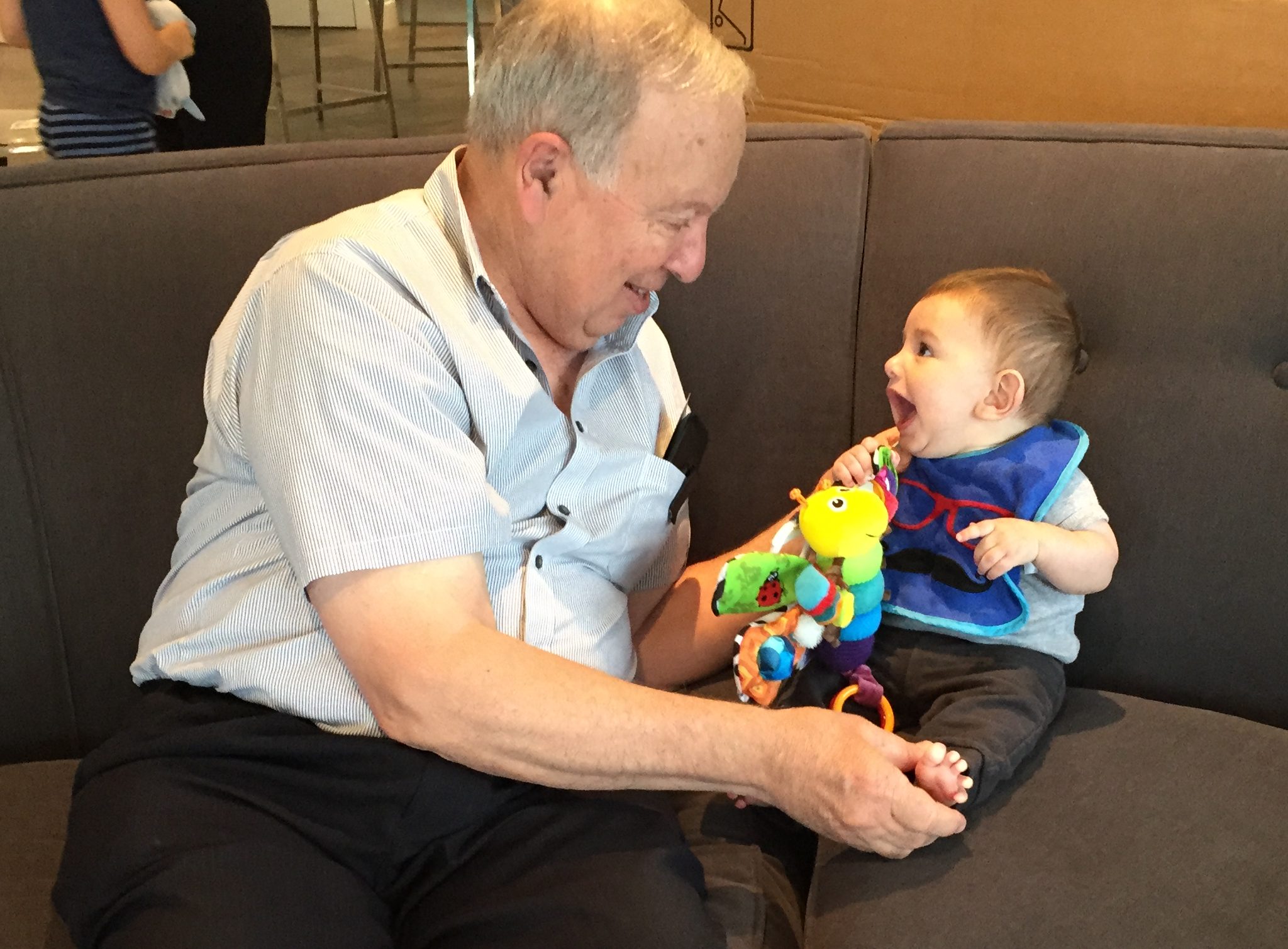
Some studies suggest that babies understand the pause and flow of a conversation as early as three weeks. Pay close attention to your baby when you are having a conversation with someone. Does she look from you to the other person when you pause, anticipating the other person to talk next? When you talk to your baby, do you ask questions, then pause for her to respond? If she is not verbalizing yet, even maintaining eye-contact with you during these pauses indicates that she is engaged.
We know that the amount of words spoken to the baby by the parent is a strong predictor of future literacy and academic skills, but recent studies are showing that this back and forth conversation (called conversational turns) is even more important. Back and forth conversation between baby and parent is showing more activity in the part of the brain that interprets language. This is called Broca’s area and it is found in functional magnetic resonance imaging (fMRI).
“It’s almost magical how parental conversation appears to influence the biological growth of the brain,” says John Gabrieli, the Grover M. Hermann Professor in Health Sciences and Technology, a professor of brain and cognitive sciences, a member of MIT’s McGovern Institute for Brain Research, and the senior author of the most recent study.
Researchers believe that the interactive conversation gives children more of an opportunity to practice their communication and language skills, which includes listening and understanding what others are saying and respond in an appropriate way.
Conversational turns represents more than just language, it represents engagement between the child and the caregiver.
When you talk to your baby, get in the habit of pausing after you ask a question so she can respond. Eventually her babble will fill in the gaps and she is learning how to have a conversation. Try to maintain eye contact with her as much as possible. Think of it as “turn taking” when you are talking to her.
Conversational turns look different at every age. With newborns, it may just be talking and asking questions, then pausing and making eye contact. With six-month-olds, there may be an exchange of babbles and coos, and with toddlers it might include expanding on their phrases and asking “Wh” questions, then answering their “Wh” questions as they get a little bit older. “Wh” questions include things like “why is the puppy barking?, Why does the child look sad? Where should we play next? What color is your shirt today?”
Talk to him all day long! Narrate what you are doing, and ask him questions along the way. Ask him what he thinks about what he sees, pause and then tell him your thoughts. Repeat this over and over. Encourage other people who are involved in the care of your baby to do the same.
References:
Gilkerson, J., & Richards, J. (2008). The LENA Natural Language Study. Retrieved from http://www.lenafoundation.org/wp-content/uploads/2014/10/LTR-02-2_Natural_Language_Study.pdf
LENA. (2018). New Research Sheds Light on the Importance of Conversational Turns. https://www.lena.org/conversational-turns-research/
Traction, A. (2018). Back-and-forth exchanges boost children’s brain response to language: Study finds engaging young children in conversation is more important for brain development than “dumping words” on them. MIT News. Retrieved from http://news.mit.edu/2018/conversation-boost-childrens-brain-response-language-0214
Walsh, B. (2018). The Brain Changing Power of Conversation. Harvard Graduate School of Education. Retrieved from https://www.gse.harvard.edu/news/uk/18/02/brain-changing-power-conversation

